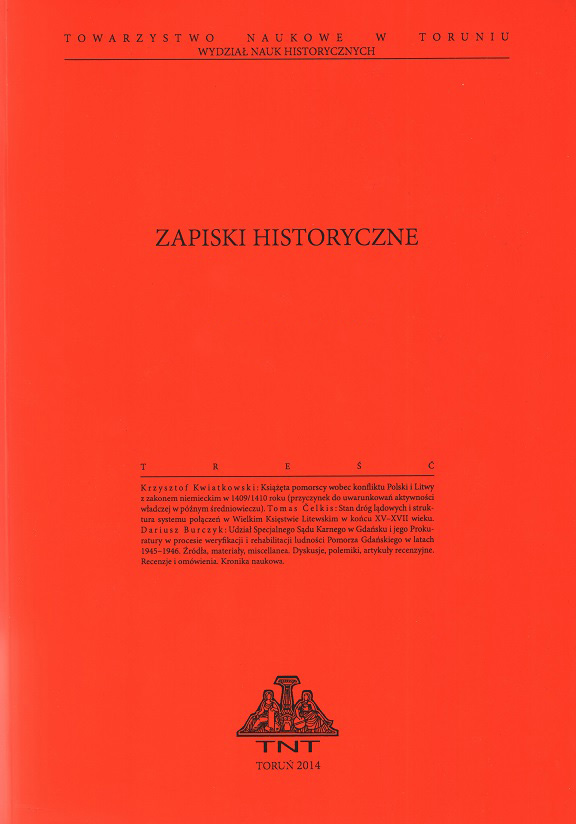Zakład Wychowawczy dla polskich chłopców w Wejherowie w okresie okupacji niemieckiej
Childcare Centre for Polish Boys in Wejherowo during the German Occupation
Author(s): Monika TomkiewiczSubject(s): Social history, WW II and following years (1940 - 1949), Fascism, Nazism and WW II
Published by: Towarzystwo Naukowe w Toruniu
Keywords: Neustadt;German childcare centres;Polish children;orphanages;territories incorporated into the Third Reich;everyday life;Gdańsk;Pomerania;the German occupation;
Summary/Abstract: At the beginning of the German occupation in the territories incorporated into the Third Reich all the Polish orphanages and childcare centres became administered by the German authorities. It was in accordance with the incentives included in the book prepared by the Political-Racial Bureau in November 1939 titled The question of the treatment of the population from the former Polish territories from the racial-political point of view, which recommended that racially valuable children should be exempted from resettlements and should be brought up in the Reich in special educational centres which followed the model of the House of Orphans in Potsdam. On 9 September 1939 Wejherowo was taken over by German soldiers from the 207th Infantry Division of Tiedemann, the 32nd Regiment of Grenzwache von Bothmer, the SS Battalion – Heimwehr Danzig of Major von Rittberg and the 5th Cavalry Regiment of Diener. The Wejherowo land became part of the Reichsgau Danzig-West Prussia. The occupying forces took over the buildings of the pre-war Centre for Social Care and the Primary School for the Deaf and Mute in Wejherowo, which are now situated at 279 Jana Sobieskiego street (at that time: Adolf-Hitler-Strasse). The buildings served as accommodation for the military units. Buildings no. 2 and no.4 along with the farm were not utilised. The German administration set up the Educational Centre called “Erziehungsanstalt Neustadt” for Polish and German boys aged 4 to 16 in the dormitory and school buildings. Polish children came from the territories of the former Pomeranian province – Bydgoszcz, Grudziądz, Toruń, Gdynia, Starogard Gdański and Kartuzy. The number of children of Polish nationality who stayed in the educational centre in Wejherowo amounted to 101 boys 9 according to the data of 31 April 1940). During their stay in the centre in Wejherowo boys were supervised by German teachers or local Kashubians. From time to time children were sent to nearby farms to help in agricultural works. In 1943 the decision was made to liquidate the centre gradually. Thirtyone boys were transported to the camp for children in Łodź in Przemysłowa street. During the evacuation of the centre some children escaped to their family homes. The remaining children were placed by the Polish authorities in childcare centres as victims of the war. Once their identity had been established, they were sent to their family homes. Orphans were placed in orphanages and childcare centres.
Journal: Zapiski Historyczne
- Issue Year: 83/2018
- Issue No: 1
- Page Range: 137-153
- Page Count: 17
- Language: Polish

